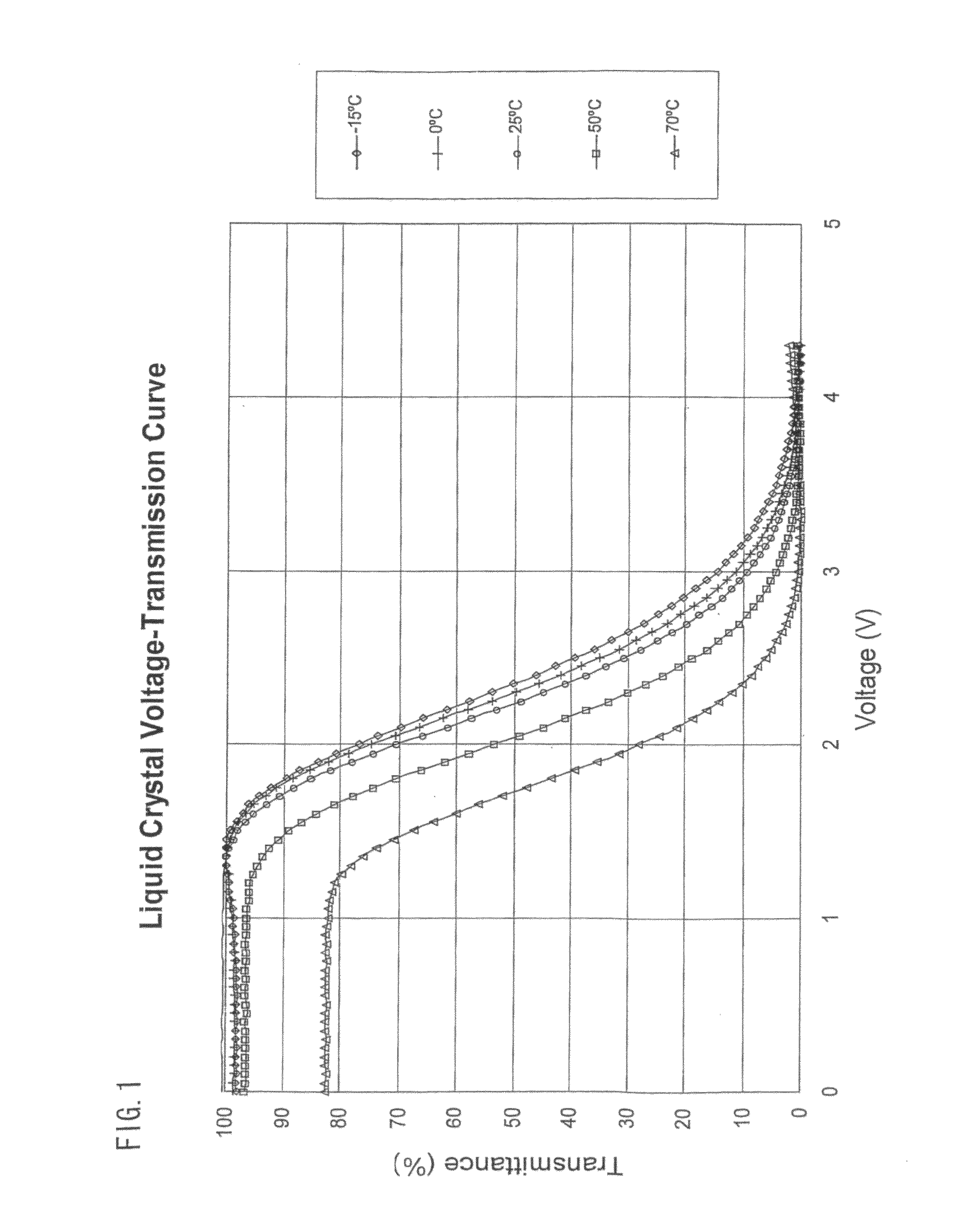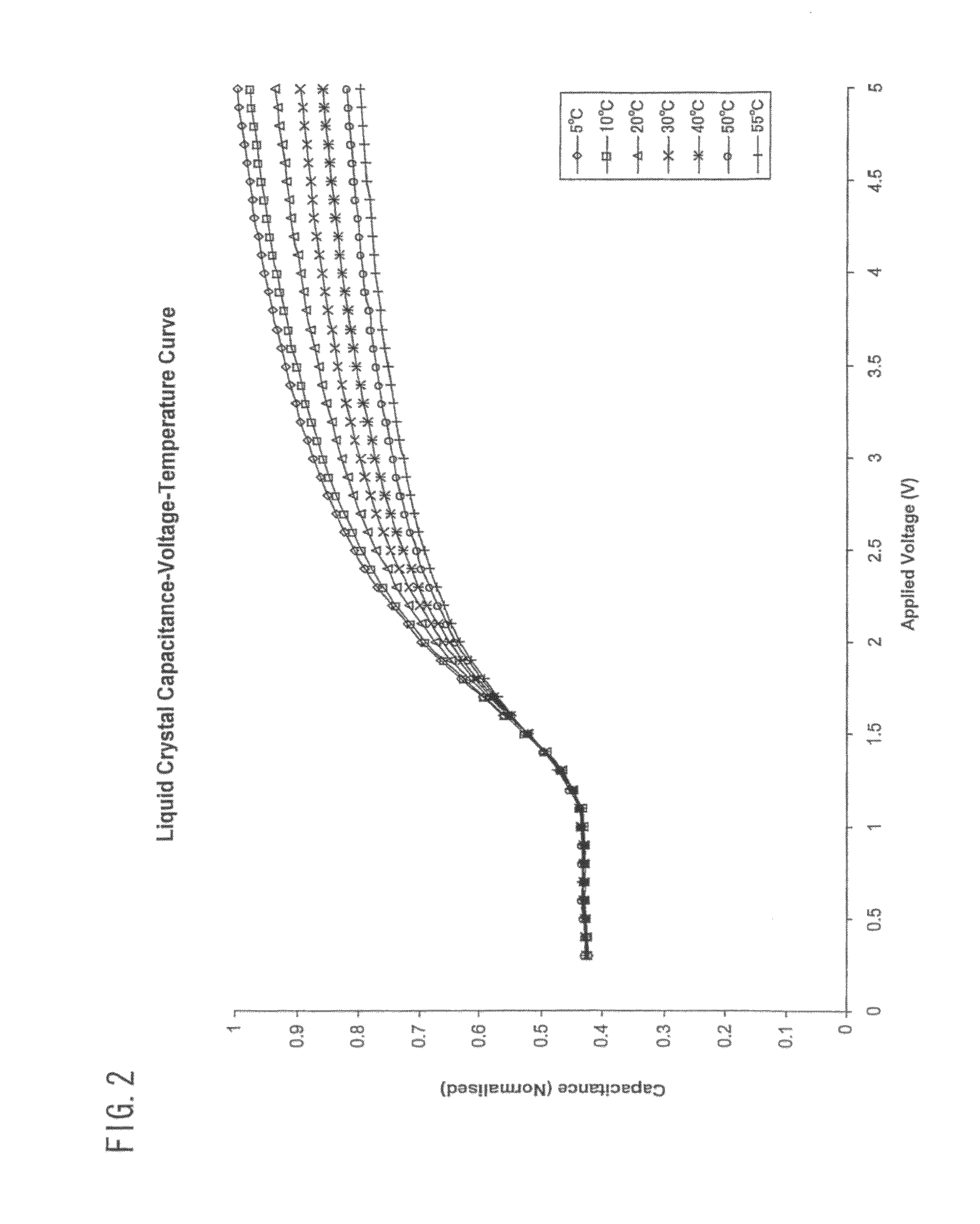Active matrix liquid crystal device
a liquid crystal device and active matrix technology, applied in static indicating devices, non-linear optics, instruments, etc., can solve the problems of loss of contrast ratio, undesirable system based on heating element methods, degraded image quality of display devices using liquid crystal (lc) and other problems, to achieve the effect of reducing contrast ratio, accurate measurement of liquid crystal material temperature, and reducing loss of display quality
- Summary
- Abstract
- Description
- Claims
- Application Information
AI Technical Summary
Benefits of technology
Problems solved by technology
Method used
Image
Examples
Embodiment Construction
[0047]As mentioned hereinbefore, the performance of an active matrix liquid crystal device (AMLCD), such as the display performance of a display, varies with the temperature of the liquid crystal material of the device. FIG. 1 illustrates how the transfer function between pixel drive voltage and pixel transmittance varies for a range of temperatures to which such a device may be subjected during operation. For example, such devices may be used to provide displays in vehicles and may be subjected to a very wide range of temperatures. In order to reduce the effects of temperature variations on display performance, compensation has to be provided.
[0048]As mentioned hereinbefore, the capacitance of a liquid crystal capacitor whose dielectric is formed by the liquid crystal material of the device may be used to provide a measure of the actual temperature of the liquid crystal material and this measure may be used in an arrangement for providing temperature compensation. However, the capa...
PUM
 Login to View More
Login to View More Abstract
Description
Claims
Application Information
 Login to View More
Login to View More - R&D
- Intellectual Property
- Life Sciences
- Materials
- Tech Scout
- Unparalleled Data Quality
- Higher Quality Content
- 60% Fewer Hallucinations
Browse by: Latest US Patents, China's latest patents, Technical Efficacy Thesaurus, Application Domain, Technology Topic, Popular Technical Reports.
© 2025 PatSnap. All rights reserved.Legal|Privacy policy|Modern Slavery Act Transparency Statement|Sitemap|About US| Contact US: help@patsnap.com



